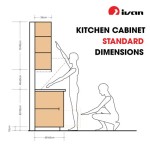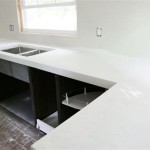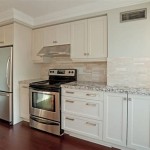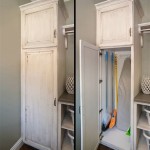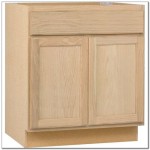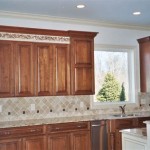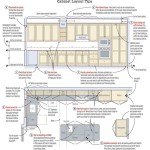How To Resurface Kitchen Cabinets With Paint
Resurfacing kitchen cabinets with paint offers a cost-effective way to update a kitchen's appearance without the expense of full replacement. This process involves several key steps to achieve a professional and durable finish.
Planning and Preparation: Careful planning is crucial for a successful outcome. Begin by evaluating the current cabinet condition. Address any necessary repairs, such as filling cracks or dents with wood filler, before commencing the painting process. Accurate measurements of the cabinet surface area will help determine the required amount of paint and supplies.
Material Selection: Choosing the right paint is essential for durability and aesthetics. High-quality cabinet paint, specifically formulated for kitchen environments, is recommended. Options include acrylic latex, alkyd, or oil-based paints, each with its own properties regarding durability, dry time, and odor. Consider the desired finish – matte, satin, semi-gloss, or gloss – based on personal preference and the kitchen's overall style. Selecting appropriate brushes, rollers, and other application tools will also contribute to a smooth and even finish.
Protecting the Workspace: Thorough surface protection is vital to prevent paint spills and damage. Remove all hardware, including knobs, pulls, and hinges. Cover countertops, appliances, and flooring with drop cloths or plastic sheeting. Masking tape applied to adjacent walls and trim will create clean lines and prevent unwanted paint transfer.
Cleaning and Deglossing: A clean surface is essential for optimal paint adhesion. Thoroughly clean the cabinets with a grease-cutting cleaner designed for kitchen surfaces. Rinse with clean water and allow to dry completely. Deglossing the existing finish, particularly if it is glossy or lacquered, will further enhance paint adhesion. This can be achieved by lightly sanding the surfaces with fine-grit sandpaper or using a liquid deglosser.
Priming: Applying a primer creates a uniform base for the paint, improves adhesion, and helps to conceal any imperfections or variations in the existing cabinet surface. Choose a primer specifically designed for the chosen paint type and the cabinet material. Apply the primer evenly, using a brush or roller, and allow it to dry completely according to the manufacturer’s instructions.
Painting: Once the primer is dry, begin applying the chosen cabinet paint. Thin coats are generally recommended to prevent drips and ensure even coverage. Use a high-quality brush for detailed areas and a roller for larger flat surfaces. Maintain a consistent direction of application for a smooth and uniform finish. Allow each coat to dry completely before applying the next. Multiple coats may be necessary to achieve the desired opacity and depth of color.
Sanding Between Coats (Optional): For an exceptionally smooth finish, consider lightly sanding between coats with very fine-grit sandpaper. This will remove any imperfections or brushstrokes and create a more professional look. Be sure to remove any sanding dust before applying the next coat.
Reassembly and Finishing: After the final coat of paint has dried completely, carefully remove the masking tape. Reinstall the cabinet hardware, including knobs, pulls, and hinges. Inspect the finished cabinets for any touch-ups that may be required. Allow the paint to fully cure for several days before subjecting the cabinets to regular use.
Ventilation: Proper ventilation is crucial throughout the painting process. Open windows and doors to ensure adequate airflow and minimize exposure to paint fumes. Consider using a respirator mask, particularly when working with oil-based paints or in poorly ventilated areas.
Cleanup: Clean brushes, rollers, and other painting tools immediately after use, following the manufacturer’s instructions for the specific paint type. Dispose of paint waste and other materials responsibly, adhering to local regulations.
Safety Precautions: Always prioritize safety when working with paint and other chemicals. Wear appropriate protective gear, including gloves and eye protection. Keep paint and other materials out of reach of children and pets. Follow all safety precautions outlined on the product labels.

Should I Paint Or Refinish My Kitchen Cabinets

Cabinet Refinishing An 8 Step Guide For Pro Painters Ppc

How To Refinish Cabinets Like A Pro

Cabinet Refinishing Guide

Cabinet Refacing Process And Cost Compared To Painting

How To Refinish Kitchen Cabinets Diy

The Fast Affordable Way To Upgrade Your Kitchen Cabinet Refinishing

Refinishing Old Kitchen Cabinets Paint And Resurface

Avoid These Mistakes How To Paint Cabinets That Are Already Painted Grace In My Space

How To Paint Kitchen Cabinets Best Color Ideas Cost
Related Posts

